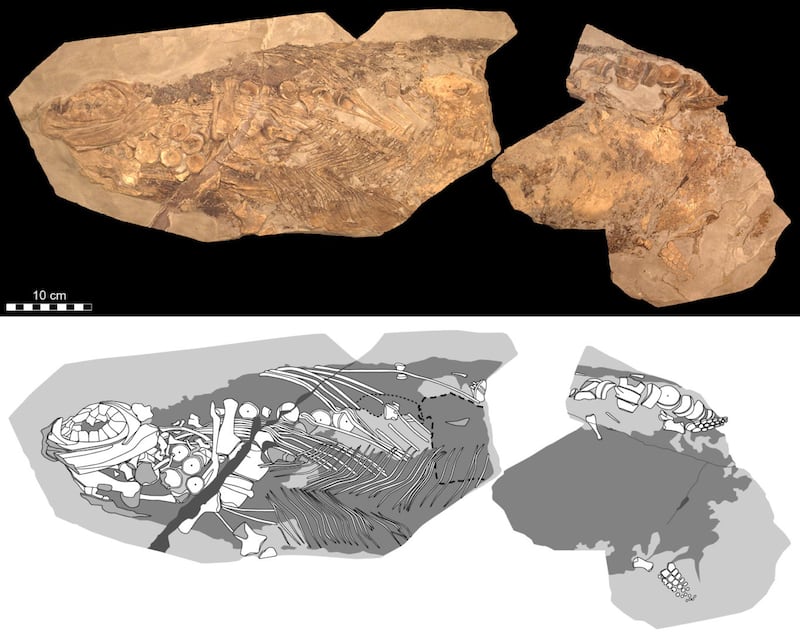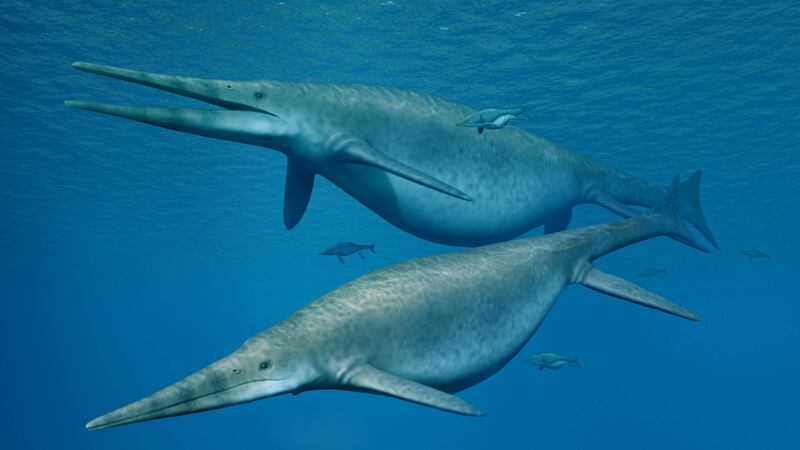Ichthyosaurs, ancient marine reptiles from the Jurassic era that resembled dolphins, were like their modern counterparts in more ways than one, research suggests.
Scientists now believe they were warm blooded, and had insulating blubber, whale-like skin, and camouflage colouring.
The discovery was made after researchers studied an unusually well-preserved ichthyosaur that lived 180 million years ago in Germany.
They found chemical evidence of blubber, suggesting that the creature was warm-blooded.

Cell-like microstructures containing pigment remnants were also identified in the fossilised skin.
With their flippers and elongated noses, ichthyosaurs were similar in appearance to present-day dolphins.
Professor Mary Schweitzer, a member of the team from North Carolina State University in the US, said: “Ichthyosaurs are interesting because they have many traits in common with dolphins, but are not at all closely related to those sea-dwelling mammals.
“We aren’t exactly sure of their biology either. They have many features in common with living marine reptiles like sea turtles, but we know from the fossil record that they gave live birth, which is associated with warm-bloodedness. This study reveals some of those biological mysteries.”
The animal belonged to the species Stenopterygius ichthyosaur.
Its fossilised skeleton complete with remnants of internal organs was recovered from a quarry at Holzmaden, Germany.
A description in the journal Nature said that like many modern marine creatures the ichthyosaur probably had dark colouring on top of its body with a lighter underside.
This would have provided camouflage to help it hide from predators from above and below – flying pterosaurs and ocean-dwelling pliosaurs.
Prof Schweitzer added: “Both morphologically and chemically, we found that although Stenopterygius would be loosely considered ‘reptiles,’ they lost the scaly skin associated with these animals, just as the modern leatherback sea turtle has.”








